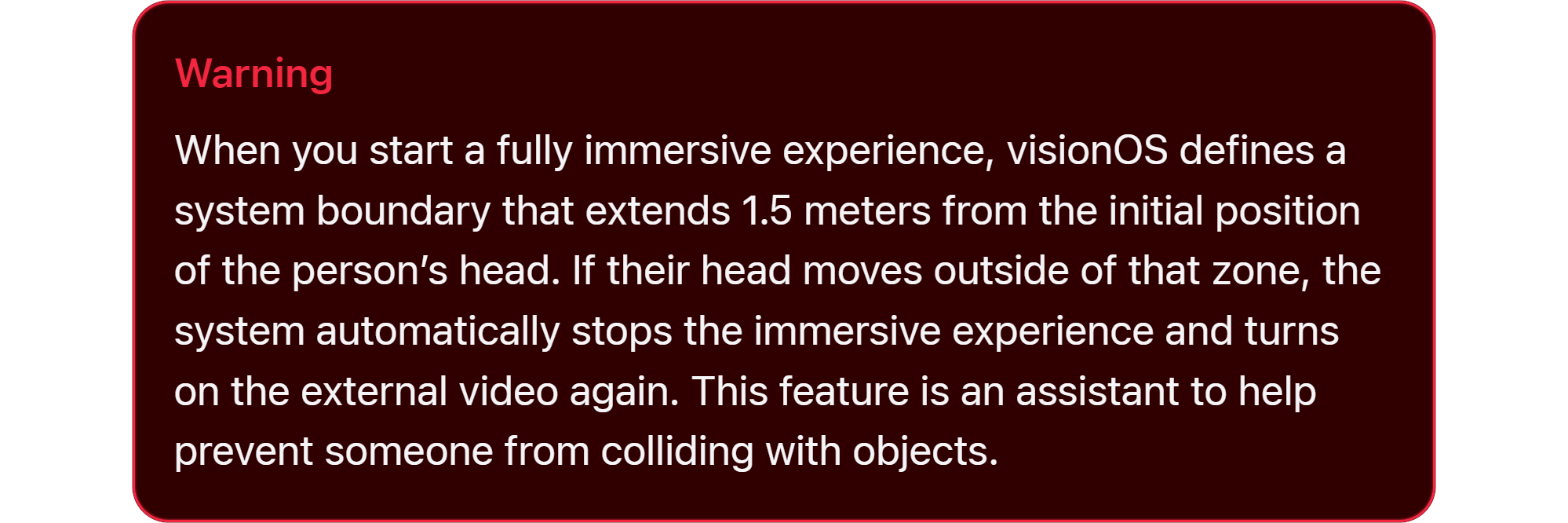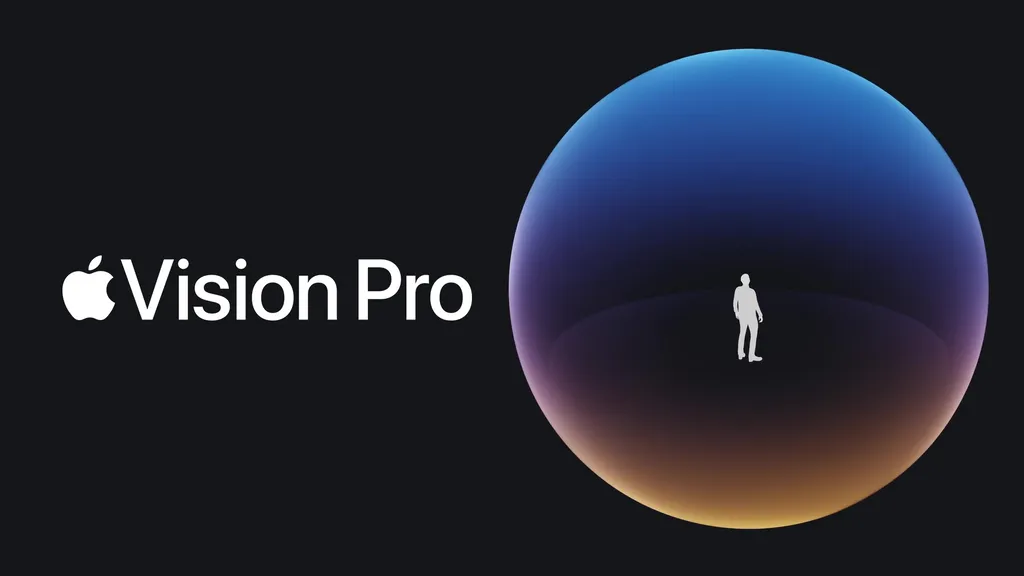Vision Pro takes a different approach to playspace boundaries in VR than existing headsets.
Apple uses the term "fully immersive experiences" for VR apps on visionOS - that is, apps which show entirely virtual content instead of any of the real world. The documentation does actually list "a virtual reality (VR) game" as an example use case of fully immersive experiences though.
According to that documentation, when you launch a VR app visionOS creates a 3×3 meter boundary centered on your head. If you move out of that zone, the VR app "stops" and you see real-world passthrough instead:

Existing headsets like Meta Quest 2, Pico 4, and HTC Vive XR Elite also fade to real-world passthrough as you exit the playspace boundary. But on those headsets you manually draw out the boundary yourself, it's not just a fixed 3×3 meter zone.
Apple's visionOS Human Interface Guidelines also state "The system can stop an immersive experience when people get too close to a physical object".
This suggests the safety system will leverage Vision Pro's scene understanding capabilities, made possible by its depth sensing hardware. How exactly that will work, and how it will compare to Quest 3's 'Smart Guardian', remains to be seen though.
The only major VR game fully confirmed for visionOS so far is Rec Room, but with the visionOS SDK now available we're sure many more developers will explore bringing their title to Apple's platform - even if that means working within new constraints.




























